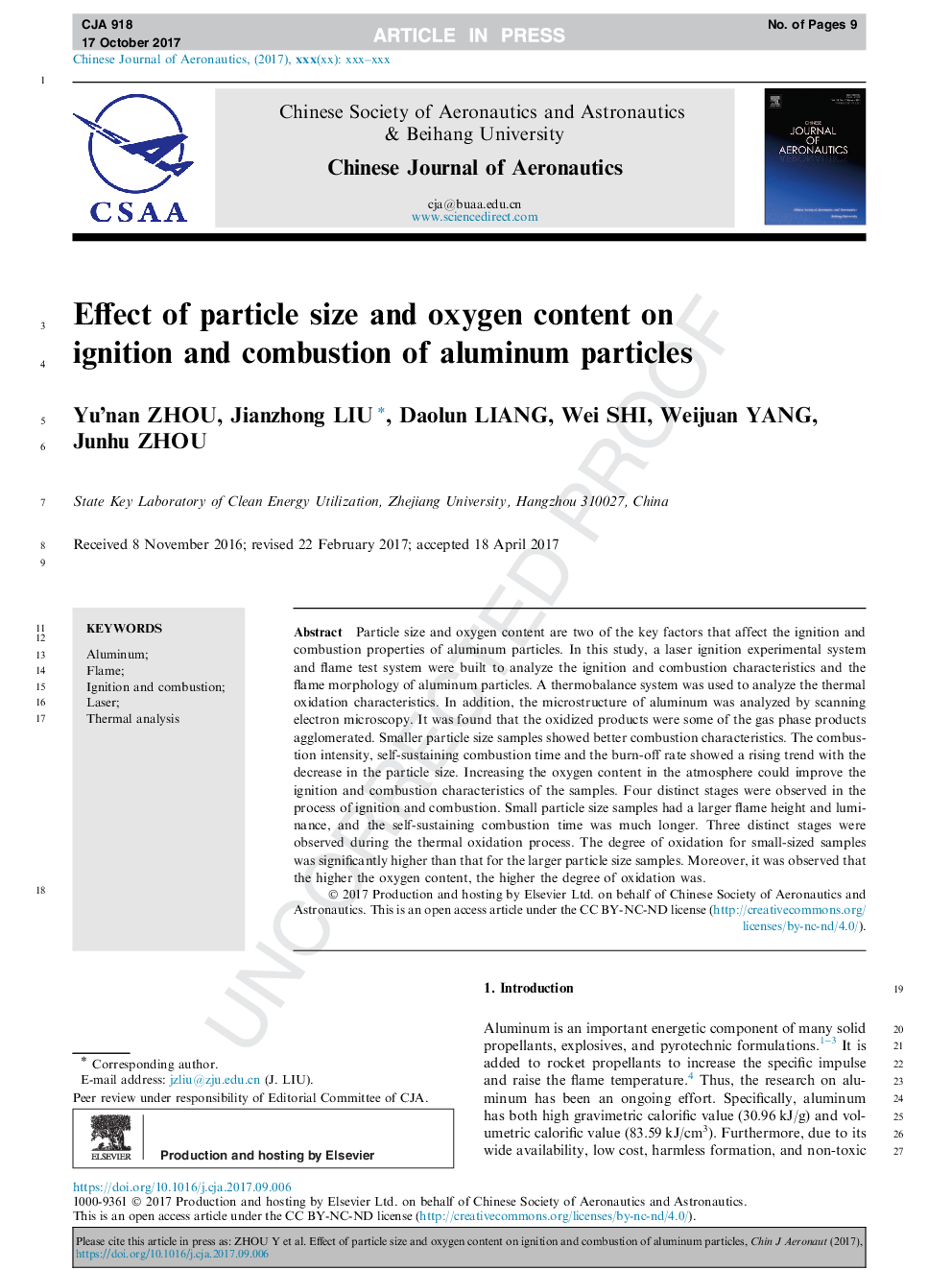| Article ID | Journal | Published Year | Pages | File Type |
|---|---|---|---|---|
| 7153849 | Chinese Journal of Aeronautics | 2017 | 9 Pages |
Abstract
Particle size and oxygen content are two of the key factors that affect the ignition and combustion properties of aluminum particles. In this study, a laser ignition experimental system and flame test system were built to analyze the ignition and combustion characteristics and the flame morphology of aluminum particles. A thermobalance system was used to analyze the thermal oxidation characteristics. In addition, the microstructure of aluminum was analyzed by scanning electron microscopy. It was found that the oxidized products were some of the gas phase products agglomerated. Smaller particle size samples showed better combustion characteristics. The combustion intensity, self-sustaining combustion time and the burn-off rate showed a rising trend with the decrease in the particle size. Increasing the oxygen content in the atmosphere could improve the ignition and combustion characteristics of the samples. Four distinct stages were observed in the process of ignition and combustion. Small particle size samples had a larger flame height and luminance, and the self-sustaining combustion time was much longer. Three distinct stages were observed during the thermal oxidation process. The degree of oxidation for small-sized samples was significantly higher than that for the larger particle size samples. Moreover, it was observed that the higher the oxygen content, the higher the degree of oxidation was.
Related Topics
Physical Sciences and Engineering
Engineering
Aerospace Engineering
Authors
Yu'nan ZHOU, Jianzhong LIU, Daolun LIANG, Wei SHI, Weijuan YANG, Junhu ZHOU,
